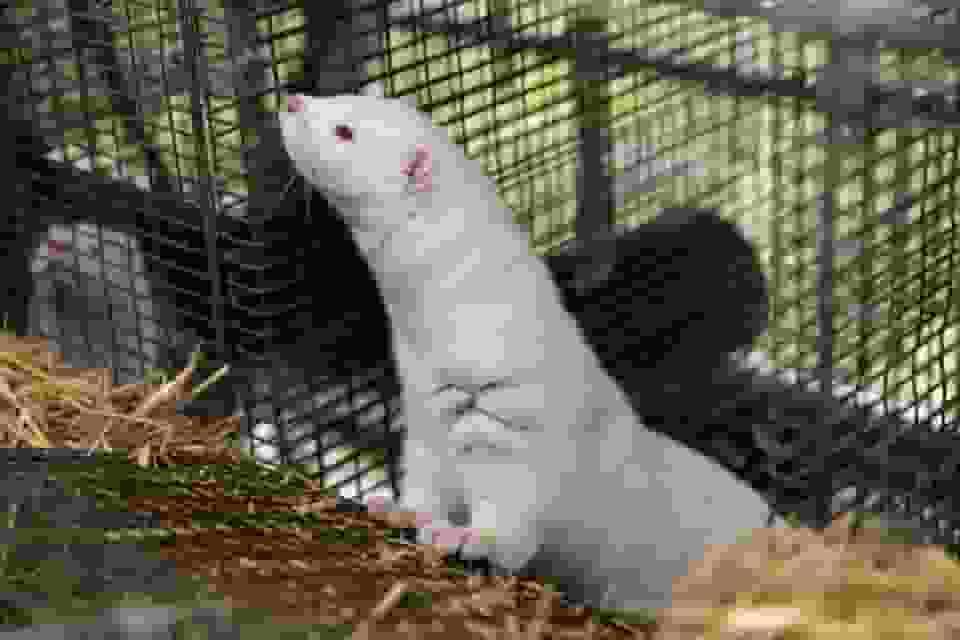
An outbreak of avian flu on a mink farm in Spain provides the strongest evidence to date that the H5N1 strain of influenza may be transmitted from one diseased mammal to another.
When mink at a large farm in Galicia, a region in northern Spain, began to die in October 2022, vets suspected SARS-CoV-2, which had previously affected mink farms in numerous other countries.
Avian Flu Outbreak At Spanish Mink Farm
However, lab tests quickly revealed something even scarier: a lethal avian influenza virus known as H5N1. Authorities promptly set quarantine limits on farm laborers. Over 50,000 mink at the site were slaughtered and their remains were destroyed.
The farm employees were not infected. However, the incident, which was documented in an article published in Eurosurveillance last week, has revived long-simmering fears that H5N1 could spark a human pandemic.
The virus is not known to travel easily between mammals; people are virtually invariably infected by infected birds, not each other. H5N1 appears to have spread through a densely packed mammalian population and acquired at least one mutation that favors mammal-to-mammal transmission.
Virologists warn that H5N1, which is currently wreaking havoc on birds all around the world, could spread to other mink farms and become even more contagious.
In 1996, H5N1 was discovered at a geese farm in China. In 1997, a large chicken outbreak in Hong Kong resulted in the first documented human deaths and triggered pandemic fears.
The virus spread to migratory birds about 2005, and it has since spread across the planet in multiple large waves. A new variation known as 2.3.4.4b, which first appeared in 2020, has spread faster and farther than any predecessor, wreaking havoc on the chicken industry in Europe and North America before making its way to Central and South America in the fall of 2022.
“It appears that this virus is simply better adapted to all birds than any other,” says Richard Webby, an influenza researcher at St. Jude Children’s Research Hospital.
In 1996, H5N1 was discovered at a geese farm in China. In 1997, a large chicken outbreak in Hong Kong resulted in the first documented human deaths and triggered pandemic fears.
The virus spread to migratory birds about 2005, and it has since spread across the planet in multiple large waves. A new variation known as 2.3.4.4b, which first appeared in 2020, has spread faster and farther than any predecessor, wreaking havoc on the chicken industry in Europe and North America before making its way to Central and South America in the fall of 2022.
“It appears that this virus is simply better adapted to all birds than any other,” says Richard Webby, an influenza researcher at St. Jude Children’s Research Hospital.
The outbreak highlights the dangers of mink farming once more. Human-introduced SARS-CoV-2 spread like wildfire among farm animals but was also given back to their keepers, raising concerns that the mink business could become a permanent source of illnesses and a breeding ground for genetic variants.
The Netherlands, which had already resolved to phase out mink farming for ethical reasons by 2024, shut down all remaining farms in 2021. Denmark killed all of its mink by 2020, but a prohibition on mink farming expired at the start of this year.
Read more: Mental health, bullying are at the top of parents’ concerns for their children
Implications For Public Health

A more extensive genetic examination of the H5N1 virus revealed that it belonged to the current clade circulating in wild birds and poultry across various continents, and was most closely related to a strain seen in European seabirds.
The researchers discovered that the H5N1 virus contains a rare mutation that has only been seen once before in a European polecat and that it could have formed on its own in the mink.
They believe the PB2 gene mutation may have public health significance because it is present in the avian-like PB2 gene of the 2009 H1N1 pandemic flu virus and possesses properties that allow identification by human airway receptor cells.
The virus was implicated in wild bird mortality in Galicia in the weeks preceding the mink farm outbreak, and given that the barns were partially open, the birds could have transported the virus to the farm.
However, the researchers stated that further sequencing is required to confirm the link. They also stated that there had been no reports of avian flu outbreaks at poultry farms that supplied byproducts to the mink farm.
At the farm, no human illnesses were discovered. Because of the risk of SARS-CoV-2 in certain conditions, Spanish mink farm workers are forced to wear masks. More research into the virus’s virulence and transmissibility are being conducted, according to the authors.
Because mink have been proposed as a possible mixing vessel for respiratory viruses, the group stressed the importance of actions to limit interaction between mink and wild animals and to control transmission between farm workers and mink.
Read more: Walmart minimum wage increase comes as the retail industry’s job market remains tight

